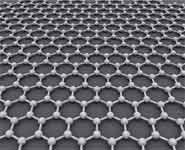The research, in collaboration with the US Office of Naval Research, is published in Nano Letters.
Graphene is made up of a single layer of carbon atoms arranged in a hexagonal lattice. It is a promising material for the production of next-generation displays or solar cells because it is flexible, transparent and conductive.
For graphene to be used as nanoelectromechanical resonators or nanosensors, it is essential to know its structural behaviour and limitations as a mechanical material.
Fabrizio Scarpa, Professor of Smart Materials and Structures in the University of Bristol’s Advanced Composites Centre for Innovation and Science (ACCIS), said: “To improve the design of graphene nanosensors it is important to understand the mechanical behaviour and the natural intrinsic damping and internal friction of graphene. Our findings indicate that graphene produced using chemical vapor deposition could be a vital alternative for nanomechanical sensor applications.”
The researchers, using a technique called chemical vapour deposition (CVD), grew graphene films on copper foil in a quartz tube furnace at 1030 oC using a mixture of methane and hydrogen.
The research established some of the elastic properties of CVD-grown, single-layer graphene films on copper. The results revealed a striking difference between single- and multilayered graphene films in both shear modulus and internal friction. This difference may be due to the transition of the shear restoring force from chemical bonding within a layer to interlayer interactions.
The average shear modulus of the films studied compared well with most of the theoretical calculations based on single-layer pristine graphene structures. The high shear modulus and low internal friction point to a low defect density structure approaching that of the pristine graphene.
The findings suggest the use of CVD material in nanomechanical sensor applications could be a vital alternative.
Paper: Shear Modulus of Monolayer Graphene Prepared by Chemical Vapor Deposition, Xiao Liu, Thomas H Metcalf, Jeremy T Robinson, Brian H Houston, and Fabrizio Scarpa, Nano Letters, published online ahead of print 03 January 2012.
